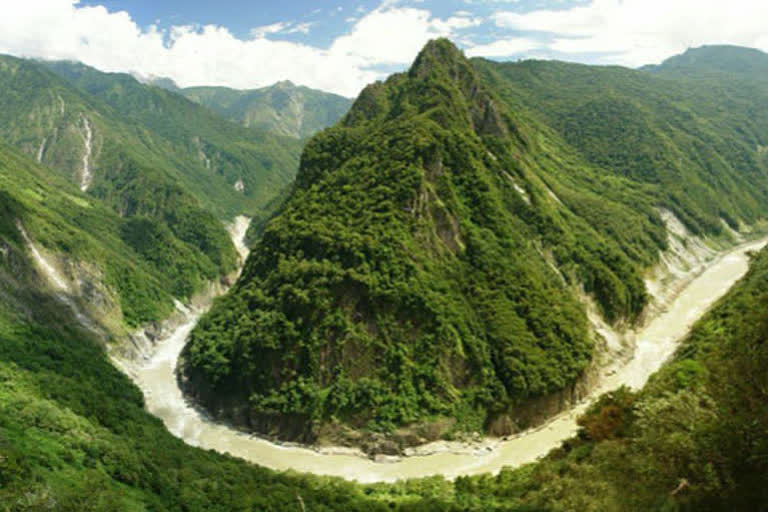New Delhi: In a white-paper brought out by Beijing on Monday, China has admitted to the construction of huge hydropower bases dam networks on its major rivers in the south-west, lending credence to the view gaining ground that constructions are on in the Yarlung-Tsangpo/Brahmaputra river, raising concerns of a negative impact on the lower riparian regions in India and Bangladesh especially on Assam and Arunachal Pradesh.
Without taking the name of the Yarlung-Tsangpo or Tibet, the white-paper titled 'Energy in China’s New Era' said: “Focusing on major rivers in the south-west, China is building large hydropower bases and controlling the construction of small and medium-sized hydropower stations in the basin areas.”
The Yarlung-Tsangpo in China’s southwest becomes the Brahmaputra in India which later flows as the Padma in Bangladesh.
Talking to ETV Bharat on the implications in the document, Dr Nayan Sharma, a leading expert on dams and who has worked on the Tsangpo river in Tibet said: “There is no doubt that the white-paper is talking about the Yarlung Tsangpo and about building huge dams and barrages in Tibet where there is a huge untapped potential for generating hydropower.”
“Large hydropower bases refer to nothing but huge dams and barrages. In all possibility, they are talking about the Motuo and Daduo dams which are to produce unprecedented power in projects that include plunging huge volumes of water down by about 2,000 metres (2 km) through 40-50 km long tunnels,” said Sharma who has also designed 25 dams in India, having taught the subject in IIT Roorkee for 37 years.
China may not have named the river and the dam projects because it may add to the ongoing controversy after protests by India.
In order to allay concerns among local people in its south-west, the white-paper adds: “It (China) is also improving policies for relocated residents to share the benefits from hydropower projects, thus giving a boost to local economic and social development and helping the relocated population get out of poverty. As in any resource development program, the goals are always set for a better economy, better environment, and better benefits for the people.”
Also Read: China will use Tsangpo river’s steep 2-km-drop to produce power
ETV Bharat has already reported on China’s ambitious plan to dam the Yarlung Tsangpo-Brahmaputra river in at least two more points in eastern Tibet to generate enormous electricity that has no parallel in human history.
Two sites on the river where China plans to dam are in Metok (Medog or Motuo) county and at Daduo (Daduquia) which are located not very far from the Line of Actual Control (LAC) or the de facto border with India.
The river water is to be intercepted at about 3,000-metre altitude, led into tunnels to turbines at 850 metres (Motuo) and 560 metres (at Daduo).
Recently, government-vetted Chinese media reports had also said that the enormous power generated will also be used to supply electricity to Nepal and China's neighboring countries.
The Metok dam is to have a power generating capacity of 38,000 megawatts (MW) power while the Daduquia dam is to have a capacity of 43,800 MW. The world’s biggest ‘Three Gorges dam’, also in China, produces 18,600 MW. A much smaller capacity dam at Zangmo (510 MW) is already operational on the Tsangpo.



